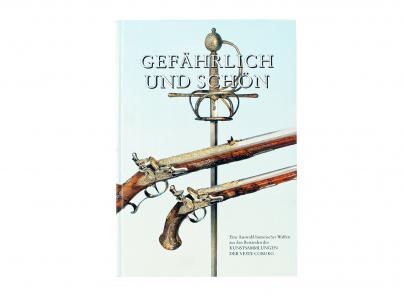A Scots Greys Heavy Dragoon
A Regimentally Marked Heavy Dragoon by Farmer 1746. With round tapering barrel stamped with ordnance marks at the breech and engraved, ‘ROYL N BRITISH DRAGs’ along the top, plain tang stamped with inspection mark on the tail, border engraved rounded lock with ‘GR’ crowned and stamped with an Ordnance inspection mark beneath the pan and signed ‘FARMER 1746’ across the tail. Full stocked in walnut (spliced repair to the front of the stock) with swell at fore-end and relief panels at lock, barrel tang and side-plate, struck with ordnance inspection marks, and cut with a number, ‘6’, brass furniture comprising long-eared butt cap, side-plate, trigger guard and ramrod pipes (one replaced). Replacement brass tipped ramrod.
Royal North British Dragoons - The Royal Scots Grey:
In 1715, the regiment deployed to northern Britain to oppose the Jacobites, remaining there until 1720. It spent the next two decades on garrison duties in England.
During the War of the Austrian Succession (1740-48), it captured the standard of the Black Musketeers at Dettingen in 1743. It also fought at Fontenoy (1745), before returning home to face the Jacobites again. In 1751, it was re-titled the 1st (Royal Regiment of Dragoons).
On the outbreak of the Seven Years War (1756-63), the regiment was employed guarding the English coast and raiding French ports. In 1760, it moved to Germany, where it fought at Warburg.
After the war, it remained on home duties in England until 1793, when it joined the Flanders campaign against the French Revolution. The regiment fought at the Siege of Dunkirk (1793), the Battle of Beaumont (1794) and the Battle of Willems (1794). By this period, its main role was as heavy cavalry, rather than mounted infantry.
In 1809, the unit moved to the Peninsular War (1808-14), helping to cover Wellington's retreat to Torres Vedras (1810) and charging at Fuentes de Onoro the following year. It also fought at Ciudad Rodrigo (1812), Badajoz (1812), Alba de Tormes (1813), Vitoria (1813) and Pamplona (1813).
In 1815, it fought at Waterloo with the Union Brigade. It captured the eagle of the French 105th Line Infantry Regiment there before being counter-attacked by French lancers.
National Army Museum, no date, royal-dragoons-1st-dragoons [online]
https://www.nam.ac.uk/explore/royal-dragoons-1st-dragoons
Dimensions:
Bore: 20 Bore
Barrel Length: 12 Inches (30.50 cm)
Overall Length: 19.5 Inches (49.50 cm)


























